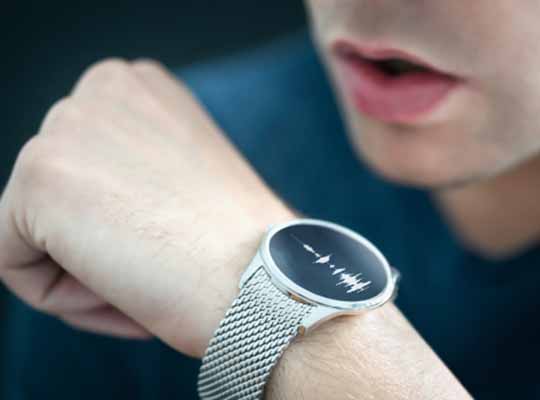The artificial intelligence (AI) is one of the best inventions for the humankind. When it is equipped in wearables, it will change the lives of people for better. The wearable AI has emerged and the unlimited potential has been nourished by researchers and tech companies across the world. The concept of “AI as a companion” has arrived, and various developments that are useful for people with disabilities are ongoing. A company from Israel launched a voice activated device to help people with visual disability and reading difficulties in reading the text from smartphones, newspapers, and wrappers. Moreover, wearable AI technology would help people with walking disabilities. Tech companies also launched processors that can be used in the devices developed for people with disabilities. The overall developments are aimed at improving lives of people through wearable AI. According to the report published by Allied Market Research, the global wearable AI market is estimated to reach $69.51 billion by 2026. Following are some of the activities taking place across the world.
Tech companies have been leveraging the incredible power of technology to change people’s lives. Giving a vision to the visually impaired people will be one of the best gifts to the people. An Israel-based firm has been striving toward offering people the artificial vision through a wearable platform. The firm developed OrCam MyEye, a voice activated device that can be linked to any pair of glasses. This device reads a text from a newspaper, a smartphone screen, or a book. Moreover, it can help people with reading difficulties and impaired vision to shop and lead an independent life.
OrCam’s next-level Smart Reading feature would utilize intuitive AI capabilities in real-time for improving lives of people with reading disabilities and issues suffering from eyes, and others. The company developed an ultra-compact device that is of a size of a finger. The text on any surface is read aloud along with recognizing faces, barcodes, colors, notes, and others in real time. The wireless and intuitive operation helps users in improving quality of lives. The device is fitted on the glasses of users and understands the voice commands and intuitive gestures. Moreover, it follows users’ eyes and assists them with different functions. The data privacy features have been enabled in the device. The launch of such devices would improve the quality of lives of users and help them lead independent lives.
Researchers have been dedicating their research activities to help people with walking disabilities with the help of wearable AI devices. Researchers from the University of Waterloo have been developing prosthetic legs and exoskeletons that are capable of making decisions with the help of cameras and AI technology. They developed a system that utilizes AI and machine learning algorithm to mimic the movements of able-bodied people. Exoskeleton legs operated on motors are available and these motors are controlled by uses through joysticks or smartphones. Researchers gave them a vision to control their movements.
People need to stop, take out their joysticks or smartphones, and change or adjust the movement according to the surrounding. To eliminate this limitation, researchers developed an AI and machine learning algorithm based software and equipped the exoskeleton legs with wearable cameras. The video feed taken through the camera would identify the surroundings such as steps, doors, and others. Then the software would send the command to the motors of exoskeleton legs to adjust the movement accordingly. Appropriate actions will be taken while climbing stairs, avoiding obstacles, and others. The development of AI algorithms is ongoing and it will be one of the most valuable developments in the sector of wearable AI.
The launch of components that would help in driving the innovation in the wearable AI devices is essential and leading tech companies are necessary taking steps by launching wearable processors. Samsung Electronics Co., Ltd. made an announcement about its new wearable processor the Exynos W920. Developed with the advanced 5-nanometer extreme ultra-violet (EUV) process node, this processor contains an LTE modem.
Harry Cho, the Vice President of System LSI marketing at Samsung Electronics, highlighted that the wearable AI devices of the future can run with visually appealing graphics and interfaces. This processor offers improved user experience with LTE. The applications in the wearable devices will be launched faster than before and appealing user interfaces on the display will be offered. In addition, the compact size of the processors would lead to sleek designs and huge space for batteries. The 4G LTE and the Global Navigation Satellite System (GNSS) would help users in monitoring elevation, speed, and distance. The launch of such processors would shape the future of next-generation of devices. The next generation of wearable devices will no longer be worn as a cool thing. These devices will play a crucial role in keeping people safe, alert, and fit. Moreover, these processors would be essential in development of wearable AI devices for people with disabilities. This would play major role in improving efficiency and lives.
Author Bio – Pratik Kirve is writer, blogger, and sport enthusiast. He holds a bachelor degree in Electronics and Telecommunication Engineering and currently working as a Team Lead – Content Writing at Allied Market Research. He has avid interest in writing news articles across different verticals. When he is not following updates and trends, he spends his time reading, writing poetry, and playing football. He can be reached at [email protected]
















